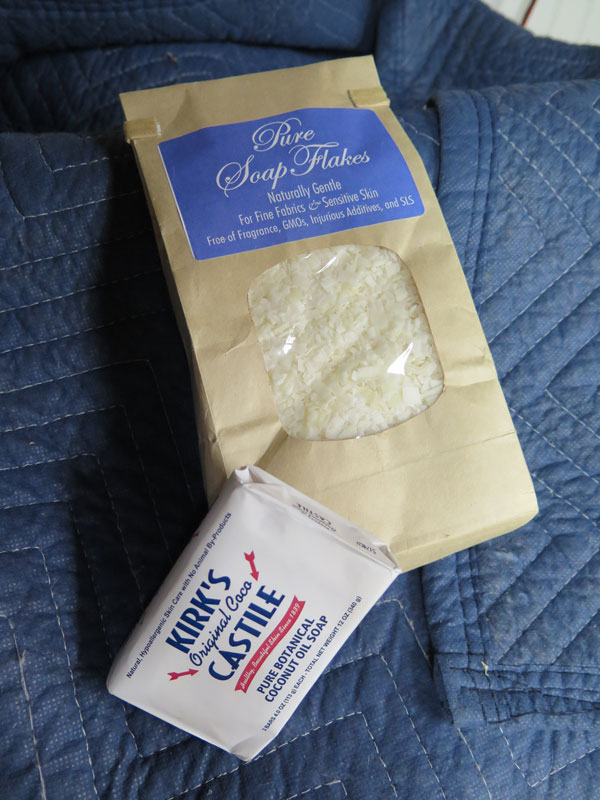We may receive a commission when you use our affiliate links. However, this does not impact our recommendations.
This year I have experimented a lot with using a soap finish on chairs and tables. Soap is a traditional Danish finish used on furniture and floors. It’s easy to apply, easy to renew, low on the toxicity scale and leaves a delightful low-sheen finish that is remarkably soft to the touch.
The downside? It’s not very durable.
After decades of using finishes that require bio-hazard gear, using a simple soap finish is a delight. I use it whenever I can convince my customers of its benefits.
The soap you need for a soap finish isn’t the stuff you probably use in the shower each morning – that has fragrances and other additives for the modern marketplace. A soap finish is made using pure soap flakes or shredded castile soap.
You can buy soap flakes from the Pure Soap Flake Co. or buy castile soap at a half-decent drugstore or grocery store (I can get Kirk’s Castile at my corner store).
I use two recipes for mixing up the finish.
One recipe uses equal parts boiling water and soap flakes (try using two cups of each ingredient). This makes a waxy, semi-hard paste. Wrap it inside a rag and rub it on your project (oak and light-colored woods work best). Buff it with a clean rag. You’ll get a semi-hard satin sheen.
The other recipe is two tablespoons of soap flakes to two cups of boiling water. Let that sit overnight and it will give you a mayo-like gel. Rub that onto raw wood, let it dry and buff it with a clean cloth. It will give you an almost-flat finish with a soft finger feel.
Try it! What do you have to lose?
— Christopher Schwarz
For Day 1 of this year’s gift guide, click here.
Day 2 is here.
Day 3 is here.
Day 4 is here.
Day 5 is here.
For my gift guides from 2013 and 2014, click here.
Here are some supplies and tools we find essential in our everyday work around the shop. We may receive a commission from sales referred by our links; however, we have carefully selected these products for their usefulness and quality.










Would shaved Ivory soap work for this?
Soap does sound interesting as a finish. I’ve been using a paste made of food grade mineral oil and honey bee wax as I am a beekeeper also. I’ve been experimenting with curing my wax in an oven warmed to 175 degrees then letting my pieces sit in the oven until cool.
I can see the advantages of soap also, since naturally made soap has lipids in it from the oils the soap is made from. Have you tried anything like homemade milk soap, or looked at the properties of the base fats like lard, tallow, or vegetable oils and how they might differ in treating the wood?
Thank you for the idea.
How durable are these two finishes in high humidity — July and August in Wash, DC as an example.
Chris,
Are there any woods on which you think this finish works especially well, or that you would avoid using it on?
Here I thought the bar of soap was to wash off the dirt from the lump of coal. Learn sumpin’ new ever year.
But what would I do with my HAZMAT suit and that pile of oil soaked rags?